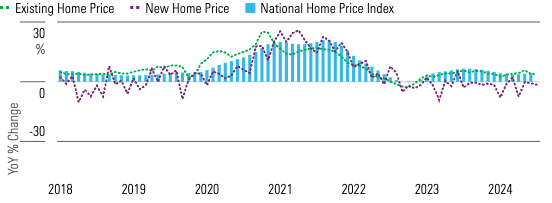Housing 2025: Key Trends, Market Shifts, and What to Expect

Understanding the Changing Landscape of Housing 2025
The American housing market is evolving swiftly – and 2025 looks to be a year of both opportunity and challenge. Whether you’re a buyer, renter, investor, or simply keeping an eye on real estate, it’s critical to understand the main drivers shaping housing 2025. In this article, we'll break down affordability, supply, mortgage rates, and what market forecasts mean for everyone involved.
Market Overview: A Shift in Demand and Supply
Entering 2025, the US housing market faces mixed signals. According to the latest Morningstar housing report, single-family home construction is set to grow by 3%, while multifamily starts are projected to see a 4% decline—though a rebound may occur as soon as 2026. There’s a notable trend: renter-occupied households are growing faster than owner-occupied ones. Rising affordability challenges and increased multifamily supply are driving this shift, which has continued for more than a year.
The Affordability Challenge: Rising Prices and Rates
Affordability remains a pressing issue for housing 2025. The median sales price for existing homes jumped 50% between 2019 and 2024, moving from $271,900 to $407,600. Mortgage rates have hovered near 7%, keeping both buyers and sellers cautious. While 82% of outstanding mortgages currently have rates below 6%, the 'rate lock-in' effect is slowing home turnover. Builders are responding by offering more incentives—such as mortgage rate buydowns and smaller floorplans—to attract buyers and boost new-home sales. Dive deeper into these shifting dynamics in this detailed analysis.
Student and Affordable Housing Trends
New sectors are influencing the broader housing picture. The National Student Housing Report for May 2025 highlights how rent growth has slowed significantly, while markets like Washington, DC are seeing the rise of all-electric, affordable developments. Such innovation in both design and energy efficiency could affect mainstream housing sooner than many expect, indicating where the future of affordability may lie.
Construction Costs and Policy Impacts
Materials and tariffs are also affecting housing 2025. Tariffs on steel and aluminum have nudged costs higher, but a diversified supplier base and exemptions under trade agreements have minimized wider impacts. There is concern, however, that restrictive immigration policy could reduce labor supply and housing demand. Despite these headwinds, leading homebuilders remain resilient and adaptive, making use of incentives and strategic planning to maintain stability.
Looking Ahead: What to Expect in Housing 2025
Most experts anticipate that as mortgage rates gradually decrease, sales incentives may fade—but affordability will remain a central concern. Major markets are likely to see a continued tilt toward rentals, fueled by a boom in multifamily development and persistent home price inflation. For a closer look at regional shifts and fast-moving local markets, see this in-depth feature.
Conclusion: Navigating Housing 2025
As we move through 2025, staying informed about housing market shifts, affordability trends, and policy changes is essential. Whether you’re purchasing, renting, or investing, flexibility and long-term thinking are invaluable. For ongoing updates, visit reputable sources like Multi-Housing News and Morningstar to deepen your knowledge of the housing 2025 landscape.